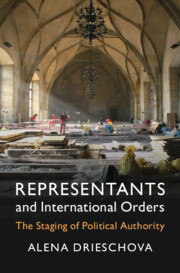Book contents
- Representants and International Orders
- Lse International Studies
- Representants and International Orders
- Copyright page
- Dedication
- Contents
- Figures
- Tables
- Acknowledgements
- Part I
- Part II Introduction: From Universal Monarchy to Territorial Balance of Power
- Part III
- Field Notes
- Interviews
- References
- Index
- References
References
Published online by Cambridge University Press: 15 May 2025
- Representants and International Orders
- Lse International Studies
- Representants and International Orders
- Copyright page
- Dedication
- Contents
- Figures
- Tables
- Acknowledgements
- Part I
- Part II Introduction: From Universal Monarchy to Territorial Balance of Power
- Part III
- Field Notes
- Interviews
- References
- Index
- References
Information
- Type
- Chapter
- Information
- Representants and International OrdersThe Staging of Political Authority, pp. 272 - 312Publisher: Cambridge University PressPrint publication year: 2025
